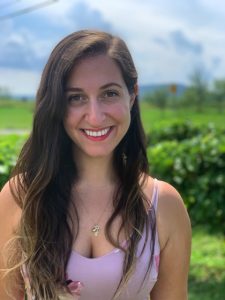
Leehi Yona, JD-PhD candidate, Stanford University
(Re)Discovering My Sephardic and Mizrahi Identity
I didn’t realize just how much I needed a space like this. I am a Mizrahi Jew: my grandparents are from Tuz Khurmatu, Iraq; Tripoli, Libya; and Cairo, Egypt. They all moved to Israel in the twentieth century, which is where my parents (and I) were born.
Going to school in the United States (by way of Canada), I was active in Jewish communities on university campuses. But most of the time, I was in the minority. In college, I might have been the only Mizrahi Jew. I felt oftentimes unsure of how to relate to communities where Ashkenazi traditions were the norm (a term I recently learned to describe this is “Ashkenormative”).
Being a part of JIMENA’s Sephardic Leaders Fellowship was such a reminder of what I’d been missing. For the first time, I was in a room with people unrelated to me whose families came from similar countries. In sharing customs and cultural stories, we see our shared heritage reflected in each other’s lives. I didn’t know how much a space like this would make me feel welcomed and seen.
One of our first speakers, Dr. Mijal Bitton, addressed some of the Sephardi invisibility in American Jewish communities. When it comes to Sephardic and Mizrahi identity in Jewish studies, she said, “it’s not that there’s so much debate. It’s that there’s not any debate.” Within an Ashkenormative culture, Sephardi Jews – though we represent a sizable portion of the American Jewish population – are often made invisible. (Of course, this would be an even more excluding experience for Black Jews and Jews of Color.)
Dr. Bitton discussed how Sephardi and Mizrahi Jews are, at best, treated as a monolith in the Jewish community, when in reality, we represent different nationalities, political views, and traditions. And, Dr. Bitton shared, in the United States, Mizrahi is usually a term used by others to describe Sephardic Jews – but not by these communities themselves. Diversity, equity, and inclusion principles (DEI) require that we engage with all of the different identities in the Jewish community.
So much of what Dr. Bitton said resonated with me – and a lot of it surprised me. I do in fact identify as Mizrahi – but I also know that my aunts and uncles would never refer to themselves in that way. They are Iraqi, or Tripolitai, or Masri. Realizing this gave me pause, as I wondered how I might identify myself in a way that honors all of these truths. It also made me reflect upon the ways in which I might contribute to a Jewish community that is diverse, equitable, inclusive, and just.
Dr. Bitton’s talk deepened my perspectives on both my own Mizrahi identity, as well as Sephardi identity in the U.S. at large.